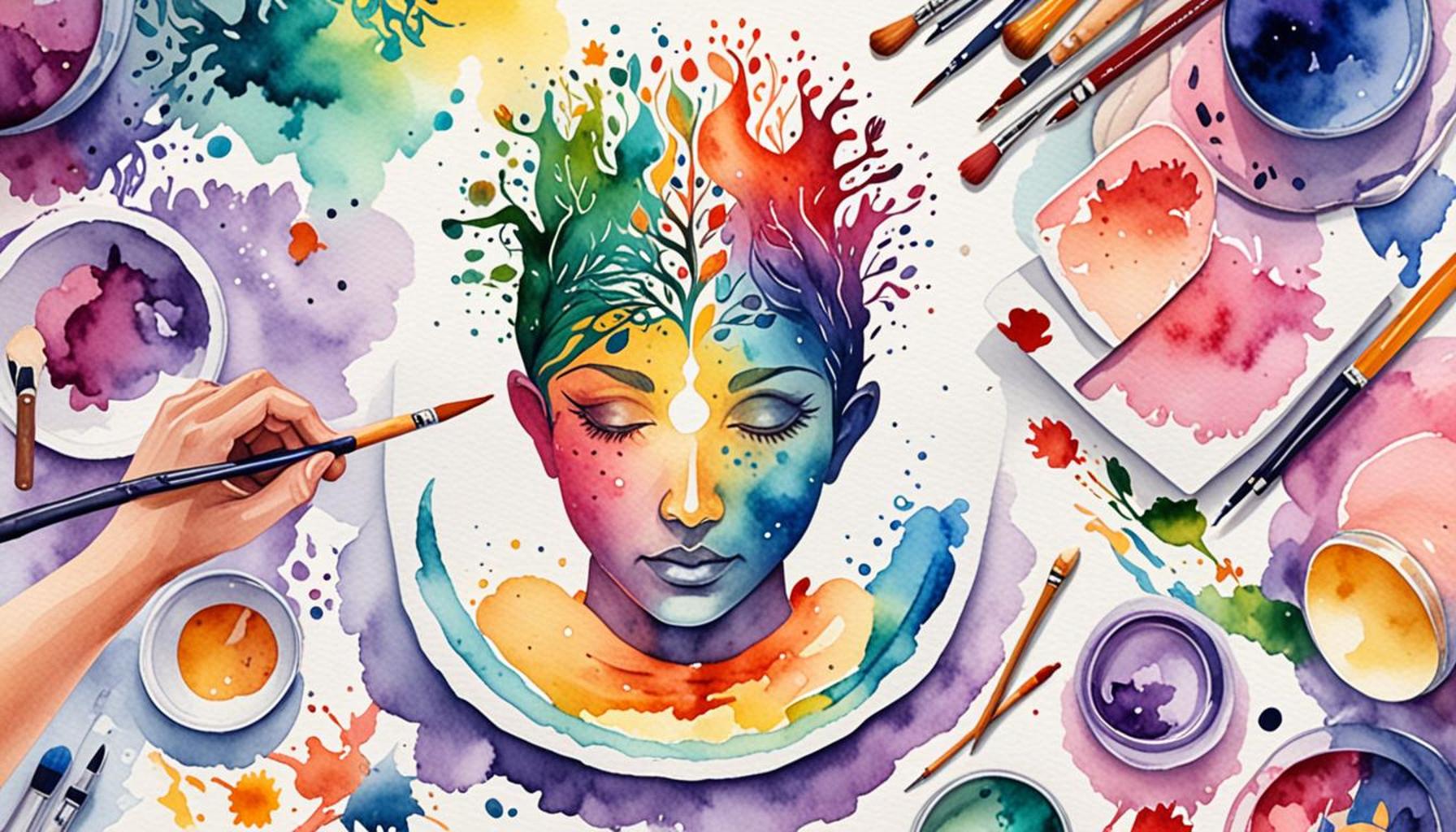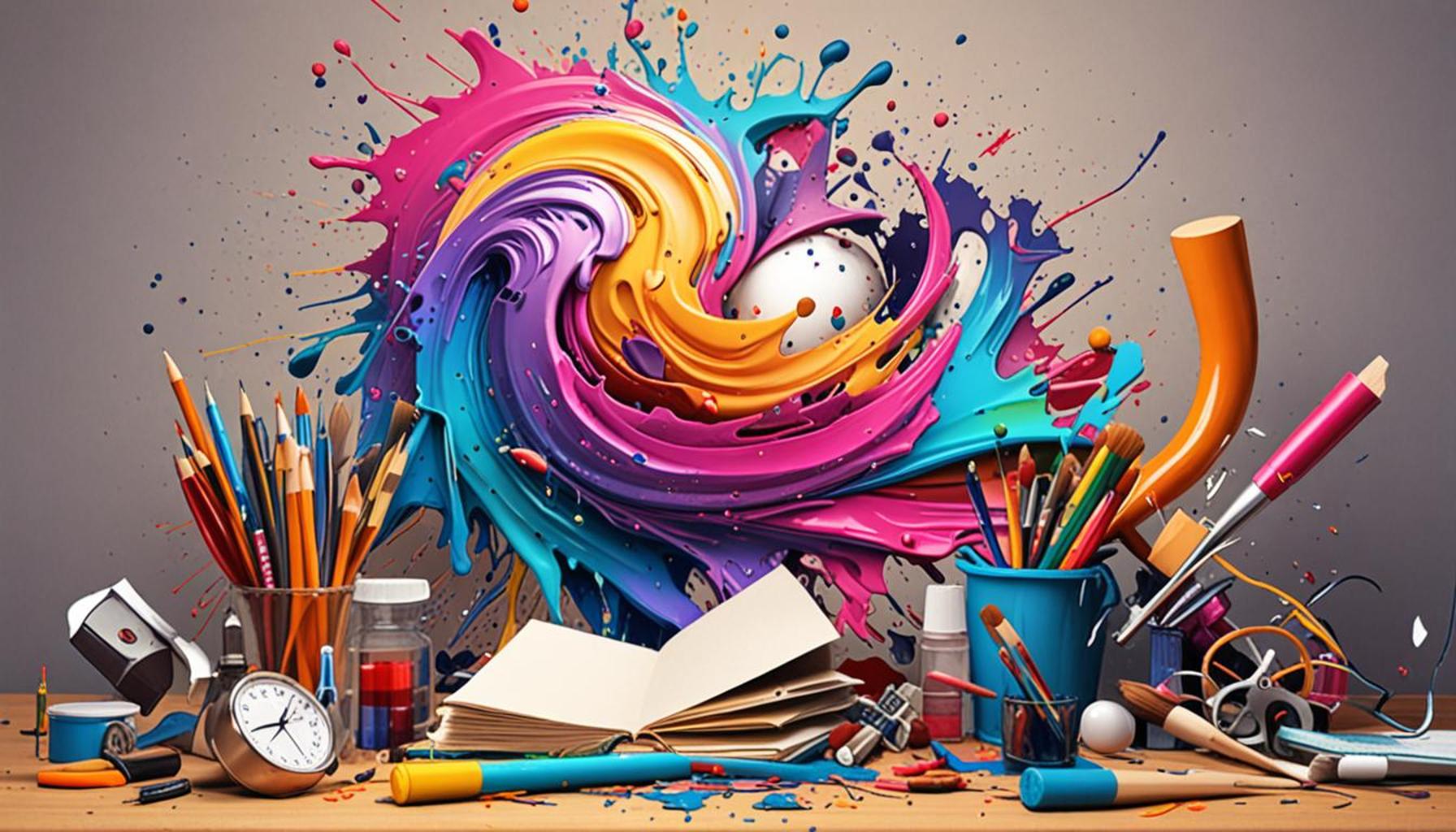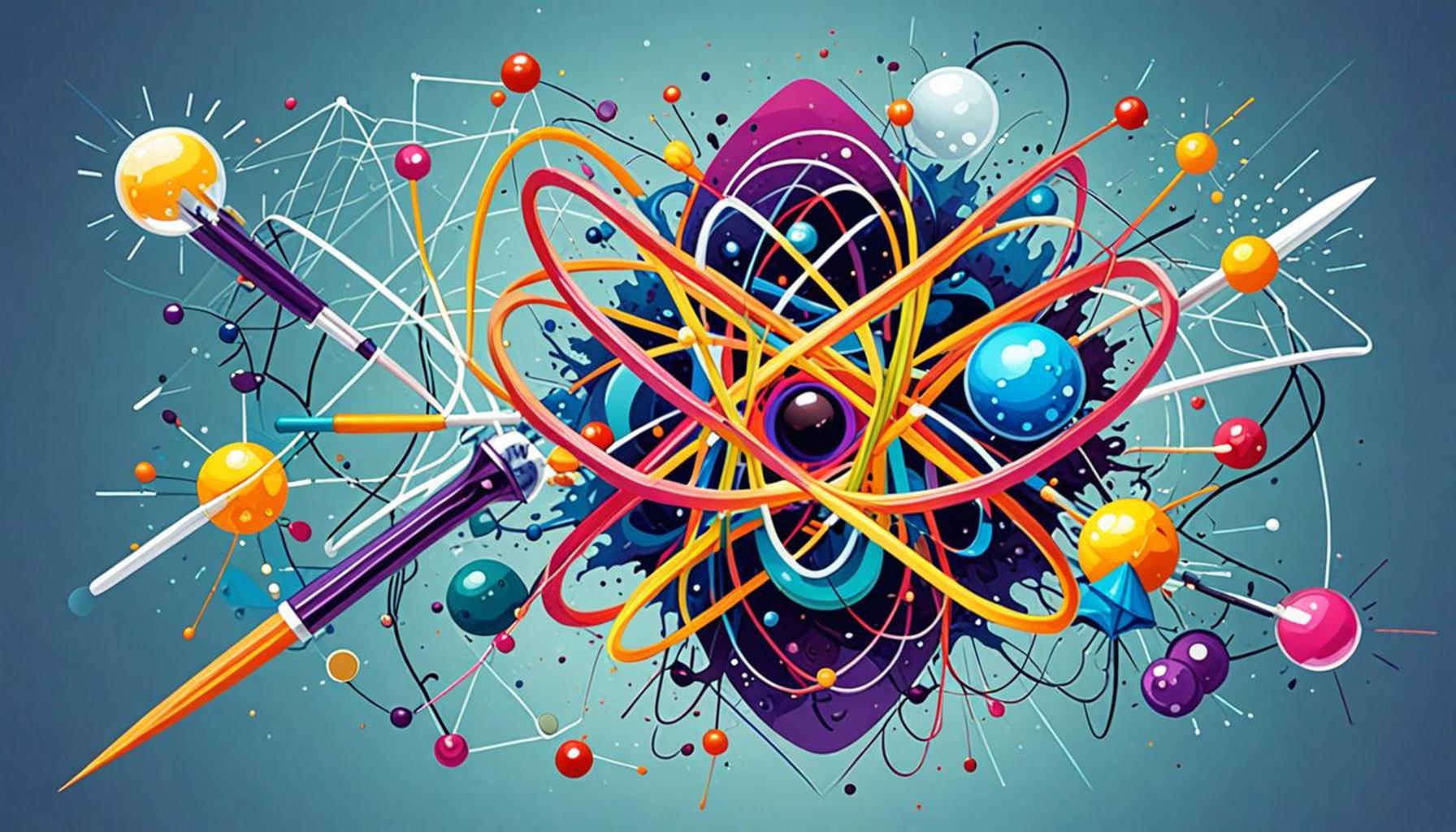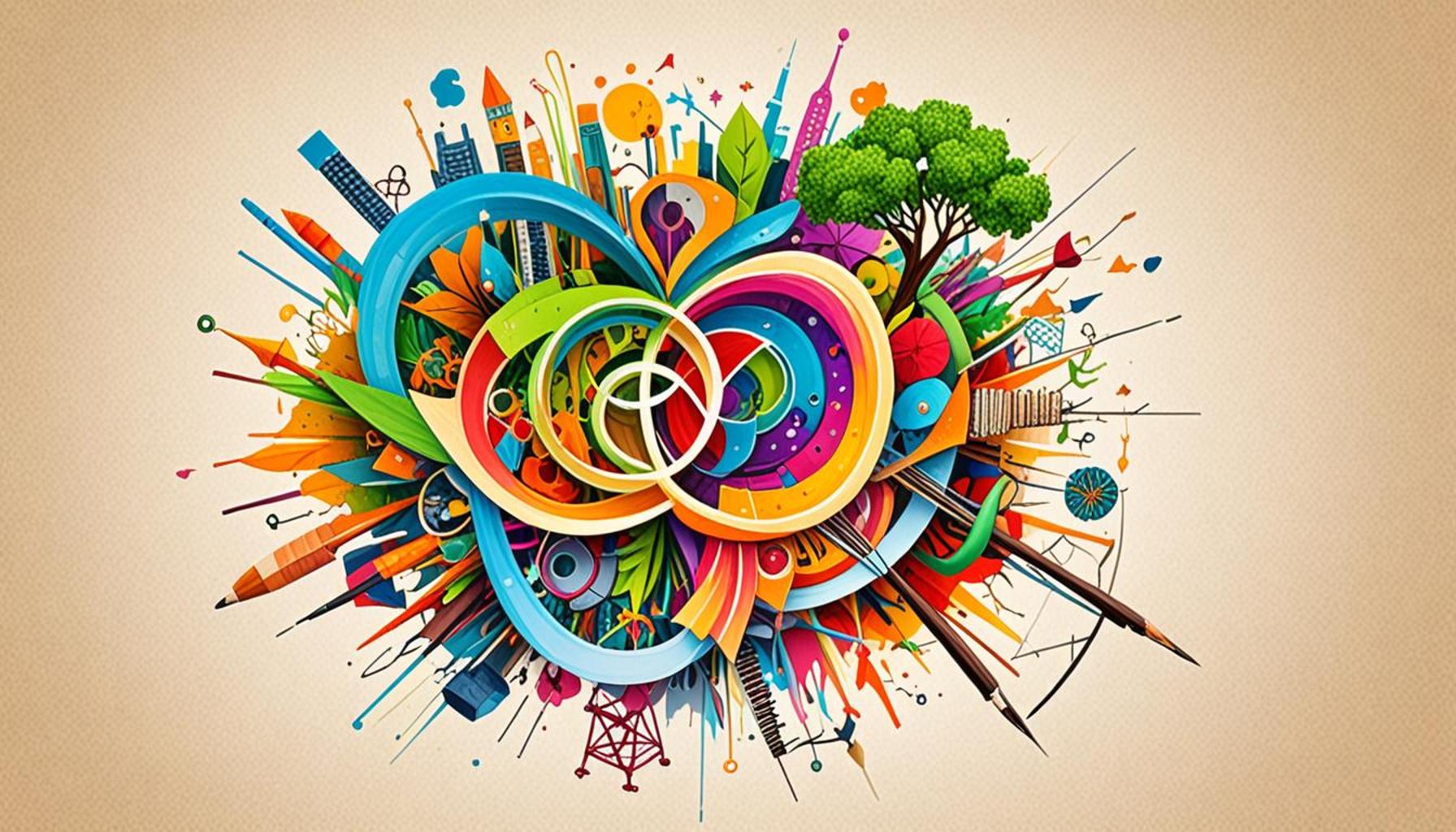The Influence of Creative Arts on Mental Health and Well-being

The Intersection of Art and Healing
The vibrant interconnection between creative arts and mental health has garnered immense attention, particularly in the context of enhancing well-being. Engaging in artistic activities not only allows for self-expression but also serves as a powerful mechanism for emotional healing. This relationship is increasingly recognized in various therapeutic settings, leading to a profound understanding of the benefits that creativity can bring to mental health.
Creative arts encompass a wide array of expressions, including:
- Visual arts such as painting, sculpture, and photography, which enable individuals to convey emotions visually.
- Performing arts like music, dance, and theater, which offer dynamic forms of expression and storytelling.
- Literary arts including poetry, storytelling, and creative writing, which allow for introspection and exploration of the human experience.
Research shows that engaging in these creative activities can lead to several mental health benefits. For example:
- Stress reduction: Activities such as painting a landscape or dancing to music can lower levels of the stress hormone cortisol, promoting a state of calm and relaxation.
- Improved mood: Art engages the brain’s reward system, which can lead to increased dopamine release, resulting in elevated feelings of happiness and accomplishment.
- Enhanced social connection: Collaborative initiatives, like community art projects or group classes, foster a sense of belonging, bridging gaps between individuals and strengthening communal ties.
In the United States, numerous initiatives highlight the importance of art therapy and community art programs, providing structured environments in which individuals can explore their creative sides. Institutions from hospitals to mental health clinics have begun to integrate art therapy into treatment regimens, demonstrating notable improvements in patients’ emotional states.
Real-world examples of this transformative power can be seen in projects like “The Mural Arts Program” in Philadelphia, which invites marginalized communities to participate in mural creation. Such initiatives not only beautify neighborhoods but also cultivate self-esteem and a sense of ownership among participants. Similarly, “Healing through Arts” initiatives in various hospitals allow patients to express their experiences through art, leading to a more profound understanding of their feelings and health journeys.
As we continue to explore the impactful relationship between the creative arts and mental health, readers are encouraged to delve into the stories and research findings that illustrate the transformative potential of artistic expression. Whether it’s through creating, performing, or simply enjoying art, the benefits for mental health are not just speculative; they are grounded in impactful, transformative experiences that many have shared across diverse communities. Discovering and engaging with these avenues can unlock pathways to healing and well-being that can truly change lives.
DON’T MISS OUT: Click here to dive deeper
The Therapeutic Power of Creative Expression
As society increasingly recognizes the significance of mental health, the role of creative arts continues to emerge as a powerful ally in promoting emotional well-being. Research has delved into how expressive practices not only facilitate communication but also contribute to cognitive and emotional growth. By tapping into everyday experiences, creative arts provide an innovative lens through which individuals can explore, understand, and articulate their feelings.
Engaging in creative arts therapies has shown positive impacts on a range of mental health outcomes. From anxiety to depression, and even chronic pain, artistic expression is praised for its multifaceted therapeutic effects. Here are some notable benefits that underscore the influence of creative arts on mental health:
- Emotional Release: Activities like painting or writing give individuals a safe platform to project their emotions. For many, this process acts as a catharsis, helping to alleviate the burden of unexpressed feelings.
- Mindfulness and Presence: Artistic endeavors encourage individuals to focus on the present moment, promoting mindfulness—a practice that has been linked to reduced anxiety and improved overall mental health.
- Cognitive Flexibility: Engaging in creative processes can enhance problem-solving skills and foster adaptability by encouraging divergent thinking—an approach thought to combat rigid thought patterns commonly associated with various mental health disorders.
The affinity between the creative arts and mental health is highlighted by various studies that support their use in therapeutic contexts. For instance, a comprehensive review published in the journal “Arts & Health” found a strong correlation between structured art participation and reductions in anxiety and depression symptoms. The positive outcomes documented in these studies align with the experiences of many individuals who have turned to creative expression as a refuge from the stresses of everyday life.
Furthermore, community-driven art programs, such as those found in public libraries and local cultural institutions, have become vital resources in fostering mental wellness. Initiatives like “Poetry Out Loud,” an annual contest that encourages youth to engage with poetic verses, not only promote literary arts but also enhance self-confidence among teenagers grappling with social anxieties. These creative outlets cultivate resilience and empower participants to confront mental health challenges head-on.
In cities like Los Angeles and New York, programs integrating art with therapy have proliferated, providing opportunities for citizens to engage with their emotions creatively. Through community workshops in visual arts, theater, or even music jam sessions, social connection is nurtured, fostering collective healing and a sense of belonging. The shared experiences gained from collaborative projects often lead to enhanced emotional support networks within communities, bridging gaps that individuals may feel.
As evidence mounts regarding the benefits of creative arts on mental health, it becomes evident that engagement in artistic pursuits is not merely a hobby but a necessary aspect of holistic well-being. Whether through formal therapy sessions or casual participation in community art programs, the potential for transformative experiences through creative expression is vast and deserving of attention.
The Influence of Creative Arts on Mental Health and Well-being
The intersection of creative arts and mental health is becoming increasingly recognized in both therapeutic and everyday contexts. Engaging in art activities can serve as an outlet for self-expression, which is fundamental in managing emotions and reducing stress levels. Various studies suggest that creative practices, such as painting, music, and dance, can stimulate the release of endorphins, leading to enhanced mood and a sense of well-being.
Art as Therapy
Art therapy is specifically designed to boost mental wellness through the creation of art. This approach allows individuals to express feelings that may be difficult to articulate through words alone. Research shows that art therapy can significantly reduce symptoms of depression and anxiety. Clients who participate in art therapy often report a deep sense of relief and catharsis, suggesting that the creative process itself can be healing.
Promoting Mindfulness
Engaging in creative activities also promotes mindfulness, a mental state achieved by focusing one’s awareness on the present moment. When individuals immerse themselves in the creative process, they often enter a meditative state that allows them to disconnect from daily stressors. This engagement can cultivate a greater awareness of one’s thoughts and emotions, facilitating personal growth and resilience.
| Category | Key Features |
|---|---|
| Art Therapy | Utilizes various forms of art to enhance emotional well-being. |
| Mindfulness Boost | Encourages present-moment awareness, reducing anxiety and enhancing focus. |
As interest in the healing potential of creative arts continues to grow, more therapeutic practices are integrating these techniques into their programs. This opens the door for individuals seeking new and innovative methods to improve their mental health and well-being. Further exploration into how different forms of creative expression impact psychological health can inform future therapeutic practices and personal wellness strategies.
DISCOVER MORE: Click here for insights on your health and creativity journey
Bridging the Gap: Creative Arts in Treatment Settings
The integration of creative arts into therapeutic environments has garnered attention for its potential to transform standard mental health practices. Therapists and mental health professionals increasingly acknowledge that art-based interventions can complement traditional approaches, creating a more holistic framework for healing. Art therapy in particular, which involves using various artistic methods to help individuals process their thoughts and emotions, has emerged as a significant aspect of this innovative integration.
Within clinical settings, art therapists often encourage patients to use mediums such as painting, drawing, or sculpture as tools for self-exploration. A landmark study conducted by the American Journal of Arts Therapy highlighted that individuals suffering from trauma found solace and healing through expressive arts. The participants demonstrated lower levels of psychological distress and enhanced overall mood after completing structured artistic activities. This demonstrates the unique capacity of creative arts therapy to unlock emotions that are otherwise difficult to verbalize.
Moreover, creative interventions are not limited to isolated therapeutic contexts. In recent years, hospitals and rehabilitation centers have started implementing art programs that aim to enhance the recovery experience. For instance, institutions like the Cleveland Clinic have employed visual arts as part of their patient recovery processes, promoting an environment that encourages creativity and relaxation. These initiatives not only contribute to patient satisfaction but also support quicker recovery times, underscoring the potential of artistic engagement in improving both physical and mental health.
- Social Interaction and Support: Group art therapy sessions allow individuals to connect with others who share similar struggles, fostering a sense of camaraderie and mutual support. Many participants report feeling less isolated as they engage with peers in a shared creative process.
- Self-Discovery and Identity: Participating in the creative arts can promote exploration of personal identity, especially among marginalized populations. Programs designed for veterans, for example, facilitate storytelling through art, providing individuals an opportunity to reclaim their narratives and identities.
- Stress Reduction: The act of creating art can be a form of meditation, allowing individuals to distract themselves from distressing thoughts and feelings, thereby reducing overall stress levels. It has been shown that engaging in art can decrease cortisol levels, the hormone associated with stress.
In the educational sphere, schools across the United States are adopting arts-based curriculums as a means to bolster mental health among students. Initiatives such as the “Turnaround Arts” program, which is part of the President’s Committee on the Arts and the Humanities, have proven instrumental in engaging at-risk youth in the creative process. Teachers report improved academic performance and a significant reduction in behavioral issues among participating students, reflecting a broader trend that emphasizes the importance of the arts in fostering emotional resilience.
Furthermore, advancements in technology have ushered in new avenues for creative expression. Digital art platforms and virtual reality experiences enable individuals to pursue artistic endeavors regardless of their physical limitations. This digital landscape provides an outlet for those who may feel unable to engage in traditional artistic practices due to circumstances such as illness, disability, or social anxiety.
In summary, the influence of creative arts on mental health and well-being is both profound and multifaceted. From formal therapy settings to community programs and educational initiatives, the arts offer a compelling avenue for individuals to reconnect with themselves and others. As research and practice continue to evolve, the role of creative expression in enhancing mental well-being stands to gain even more prominent recognition.
DISCOVER MORE: Click here for a guide on starting your miniature collection
Conclusion: Embracing the Power of Creative Arts for Mental Well-being
As we have explored, the influence of creative arts on mental health and well-being is undeniable and widely recognized across various sectors. The integration of art therapy in treatment settings has not only provided individuals with essential tools for self-expression but has also enhanced recovery processes in clinical environments. Among the myriad benefits, creative arts offer a pathway for social connection and support, critical for fostering community among those experiencing similar struggles.
The capacity for creative endeavors to promote self-discovery and reduce stress emphasizes their role as a vital component of holistic mental health practices. Schools and community programs adopting arts-based curricula demonstrate how fostering creativity among youth can lead to not only emotional resilience but also improved academic performance and decreased behavioral issues.
Moreover, the advent of technology has opened new pathways for creativity, making artistic expression accessible to a broader audience, particularly individuals facing challenges such as illness or social anxiety. This encapsulates a new era in which mental health strategies evolve in tandem with cultural and technological shifts.
Looking ahead, greater recognition and implementation of creative arts can play a fundamental role in transforming how we conceptualize and approach mental health care in the United States. By valuing the expressive arts as integral to well-being, we can foster healthier communities where every individual is empowered to explore their identity and emotions through creativity. As research expands and more programs are developed, the potential for the arts to heal is only beginning to be understood, inviting us all to engage in this enriching journey of self-discovery.


